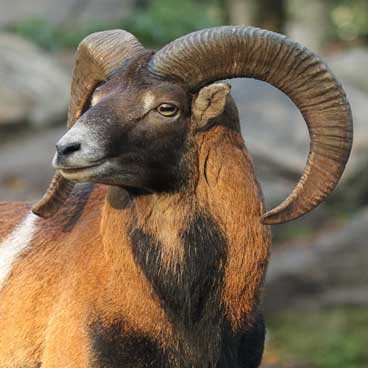European mouflon
Mouflon - Ovis orientalis musimon
The European mouflon is the only non-native representative of ungulates in Karkonosze. It was brought here about 100 years ago. It is an ancestor of domestic sheep and the smallest representative of wild sheep. It was introduced in many parts of Europe. Individuals that was brought to the continent actually came from Sardinia and Corsica. However, according to some sources, the relict populations inhabiting those islands as well as Cyprus – seem to be the descendants of domesticated mouflons, which were introduced there in ancient times from the area of their primary occurrence, extending from Asia Minor to the Persian Gulf and the eastern borders of Iran. The first introduction of this species in the Jelenia Góra Basin took place at the beginning of the 20th century. At that time, the mouflons brought by Count Schaffgots were released in the vicinity of Jagniątków, Zachełmie and Przesieka. In the years 1912 and 1913 there were further resettlements of this mammal. In 1925 the number of mouflons was estimated at 48 individuals, and nearly before the outbreak of World War II almost 500. The introduction of this species into the Karkonosze massif was closely linked to the hunting purposes – otherwise very popular in the early 20th century. Presently, the population of those interesting mammals in the Polish part of Karkonosze is very low - their size number does not exceed 30-35 individuals.




 Public Information Bulletin
Public Information Bulletin





